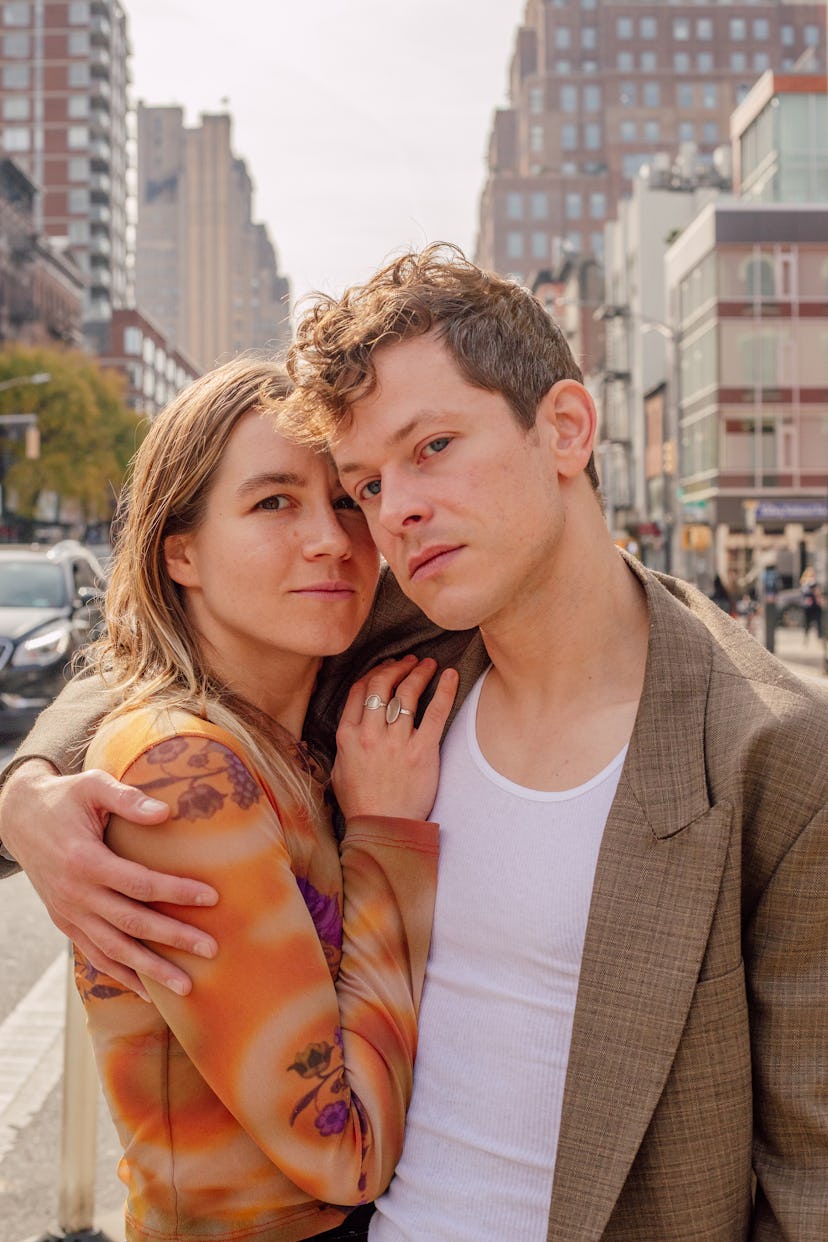Perfume Genius Reflects on The Sun Still Burns Here, His Genre-Bending Live Music Dance Project
The collaboration with choreographer Kate Wallich arrives at New York’s Joyce Theater on November 13th.

After the Seattle premiere of The Sun Still Burns Here, a live music and dance collaboration between indie pop musician Perfume Genius (AKA Mike Hadreas) and the choreographer Kate Wallich, an audience member walked up to Alan Wyffels, Hadreas’s long term partner and collaborator, and declared it “Fantasia for people who are dead inside.”
Sitting in a mirrored rehearsal studio in the basement of New York’s Joyce Theater, where the show will run from November 13-17, Hadreas and Wallich reflected on the piece, a genre-bending performance that features the former singing and dancing alongside the latter’s dance company, called The YC.
“I mean, I love that that’s where they went,” Hadreas says, of the audience member’s reaction. “In a way, it sort of feels like that. There are parts of me that felt disconnected that are now fully plugged in.”
This isn’t the indie version of your standard stadium pop performance—no backup dancers flanking the star as he runs through the hits. Hadreas wrote all new music for the piece, developing the sound alongside the movements for almost a year. Commissioned by the Seattle Theater Group with Mass MoCA and The Joyce, the show premiered in Seattle last month and heads to the Walker Art Center in Minneapolis in December and Boston’s Institute of Contemporary Art in January.
Wallich and Hadreas said they want it to express a spectrum of emotions—ecstasy, fear, anger, sexiness, romance, loneliness and happiness. “People have no choice but to have shit be conjured up. Good and bad,” Hadreas says.
Two tracks from the performance—the crinkly, synthetic Pop Song and the darker slow burn Eye in the Wall—have been released as singles so far. Hadreas says he plans to release all of the 11 songs featured in the piece as a standalone album at some point next year. “It was important to me that it was an album, that it’s a listenable thing,” Hadreas says. “Some of my songs are longer than usual, but I wanted it to be constantly as considered as I would when I write my music that’s only two and a half minutes.”
He and Wallich have spoken about filming the piece (“Like film film it. Like movie film it,” he says) as well as putting out a book. But for now, they’re happy for it to be a discrete live experience for a little while longer. “I love, right now, that you can only see and hear it when you come to the shows,” Hadreas says.
Photograph by Maridelis Morales Rosado for W Magazine.
Aesthetically, the pair pulled references from a grab bag of sources: Peter Greenaway movies, Cy Twombly paintings, and Paula Abdul’s “Cold Hearted Snake” video. The posters, which show Hadreas, Wallich and Wyffels draped over each other among a pile of chairs, are romantic and a little sinister—Hadreas describes them as “dark sided Danielle Steel.”
It’s colorful and theatrical, campy and serious at the same time. The costumes are a mix of pieces by Sies Marjan, Maison Martin Margiela and Eckhaus Latta that have been fitted with gussets to allow for freer movement.
Hadreas had no formal dance training before working with Wallich, and the experience of working so closely with his body was a profound one. Watching them move together, you get the sense that they’ve developed an exceptionally close relationship. Posing for photos around the Joyce, they intertwined their limbs in slow motion, draped themselves over railings and across the Joyce’s 80s-noir carpeting, and extended articulated legs in the face of 8th Avenue traffic. It’s tender, confident and endearing at once.
The rehearsal process was intimate and experimental. “We tried to create this space where it was safe to be vulnerable and nasty and sweaty and delicate—all the things together,” says Wallich, whose past projects include a site specific ballet performance on a tennis court in Captiva Island with costumes by Will Cotton and an inclusive weekly class called Dance Church.
Photograph by Maridelis Morales Rosado for W Magazine.
“I’m not the type of director who’s sitting at the front of the room with a chair and a stick. It kind of felt like therapy in a weird way,” Wallich says. “Rehearsal would be sitting and talking, or getting really sexy with a ballet bar, or really considering what it means to be intimate with a foam roller. That type of work is what opens people up.”
Hadreas is used to being vulnerable. He’s spoken openly about his past struggles with addiction and his lyrics can be raw and poignant. But this was something else. “I’ve been making music for a long time, so I’m able to bring something unsafe or strange or too much up and make a story around it in a way that feels safe and wild, but in a way that I know,” he says. “This is wild in a way that I don’t.”
“It has been really emotional,” Hadreas says. “I’m not really emotional. I’m emotional in my work. I’m patient and thoughtful about feelings when I’m making songs. I don’t really have emotions otherwise, because I’d rather do something else. But the body, moving, I had no choice. I was kind to myself in a way that I have never been.”
Related: How Perfume Genius Found the Transgression—and His Most Daring Music Yet—in Self-Care